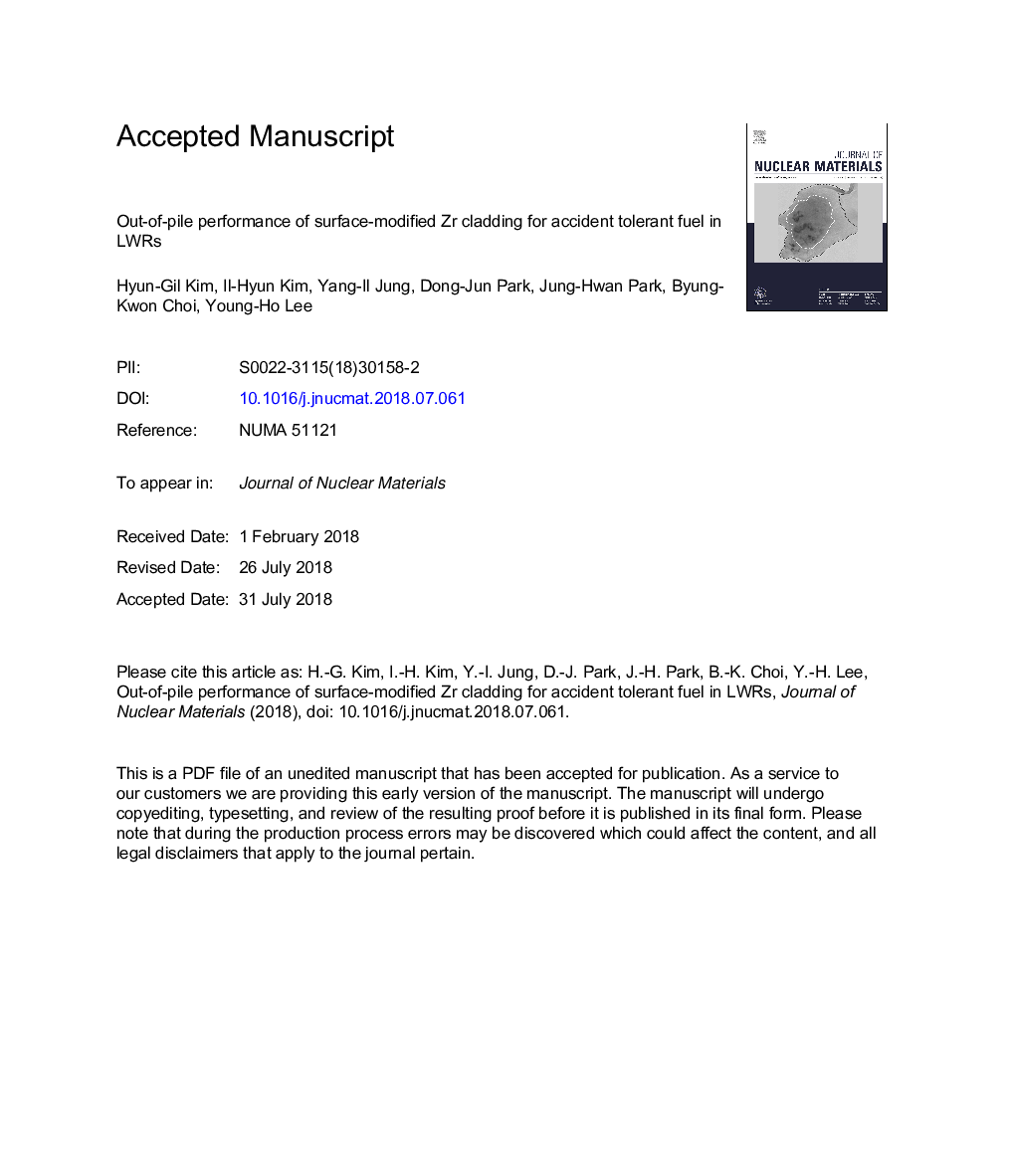| Article ID | Journal | Published Year | Pages | File Type |
|---|---|---|---|---|
| 7962909 | Journal of Nuclear Materials | 2018 | 22 Pages |
Abstract
ATF claddings are defined as those that provide considerably increased response time in the event of a reactor accident while providing performance similar to or better than that of the commercial zirconium (Zr) cladding during normal operation. Surface modification technology consists of a coating technique for increasing oxidation resistance and an oxide dispersion strengthened (ODS) for improving high temperature strength. The CrAl alloy and Cr coating were applied by arc ion plating method and the FeCrAl alloy coating was applied by 3D laser coating. The ODS structure is prepared by 3D laser scanning technology using oxide powder. The prepared specimens were evaluated for corrosion/oxidation and mechanical behavior in normal and accident conditions. In the surface-modified Zr cladding concept, the oxidation resistance and strength at high temperature can be improved considerably over commercial Zr-based alloy cladding by a combination of two types of surface modification technology of the surface coating and partial oxide dispersion strengthened (ODS) treatment. From the various performance evaluations, the surface-modified Zr cladding concept shows promise as an ATF cladding.
Related Topics
Physical Sciences and Engineering
Energy
Nuclear Energy and Engineering
Authors
Hyun-Gil Kim, Il-Hyun Kim, Yang-Il Jung, Dong-Jun Park, Jung-Hwan Park, Byung-Kwon Choi, Young-Ho Lee,
